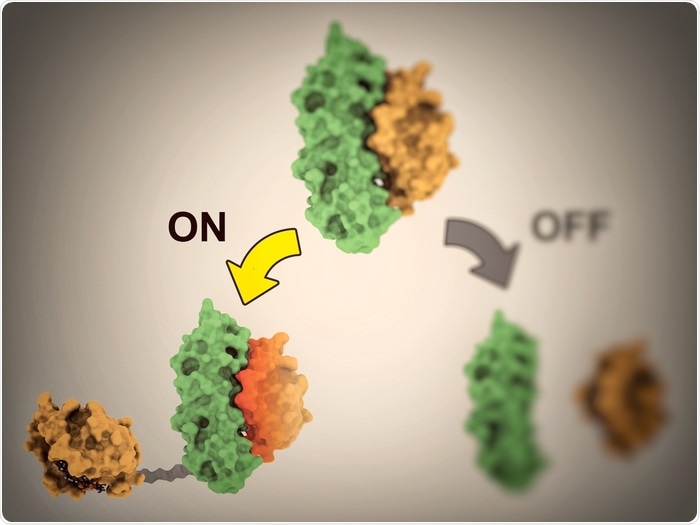Doctoral assistant Sailan Shui from EPFL’s Laboratory of Protein Design and Immunoengineering loves to experiment with proteins, activating and deactivating them similar to turning on and off the light switches. But the researcher, instead of using electronics, depends on proteins to induce the process.

New proteins enable scientists to control cell activities. Image Credit: Sailan Shui.
To devise the technique, Shui and co-workers computationally modeled proteins that do not exist naturally. She later assembled proteins into ON- and OFF switches. The study was published in the journal Nature Communications.
The first step was joining the two synthetic proteins together and making sure they can work in tandem. One protein acts like cement, gluing the entire structure together, and the other is a drug receptor. We also had to find two proteins that form strong, stable bonds so that they remain attached.”
Sailan Shui, Doctoral Assistant, Laboratory of Protein Design and Immunoengineering, Ecole Polytechnique Fédérale De Lausanne
A molecule flips the switch
After the formation of the protein pairs, the next step was to identify a third kind of molecule capable of alternatively attaching to the existing structure and activate or deactivate it (by separating it). Shui designed the systems to be responsive to a clinically accepted drug Venetoclax—normally administered to treat cancer. However, Shui identified a new use for it.
Shui adds, “I basically transformed Venetoclax into an on-off switch for the proteins.”
The drug upon contact with the proteins either activates them or breaks them, eventually deactivating them.
In our method, it’s the Venetoclax molecules that serve as the light switch. They’re the ones that activate or deactivate the proteins.”
Sailan Shui, Doctoral Assistant, Laboratory of Protein Design and Immunoengineering, Ecole Polytechnique Fédérale De Lausanne
This denotes that Shui can control when the proteins are activated, and the time for which they are activated.
Monitoring cell activity
The researcher anticipates that these protein switches may be employed in the future as intermediaries with cells inside the human body.
Shui further states, “We could place the protein switches inside specific cells, for example, so that they can be activated when we want. That way, when we’re ready, we can apply the stimulus and observe the cellular response.”
This type of protein circuit, where the same compound serves two diametrically opposed functions, could be a promising method for monitoring the safety and efficacy of modified cells.”
Bruno Correia, Laboratory of Protein Design and Immunoengineering, Ecole Polytechnique Fédérale De Lausanne
Bruno Correia heads the EPFL laboratory where Shui carries out research.
Source:
Journal reference:
Shui, S., et al. (2021) A rational blueprint for the design of chemically-controlled protein switches. Nature Communications. doi.org/10.1038/s41467-021-25735-9.